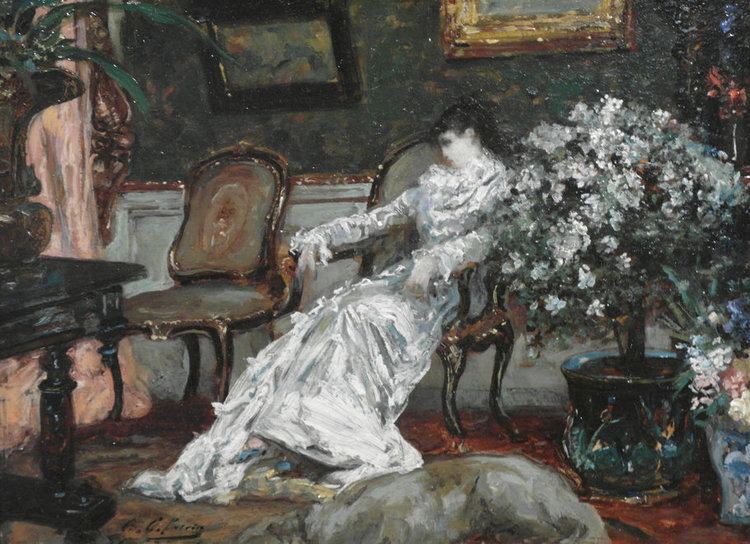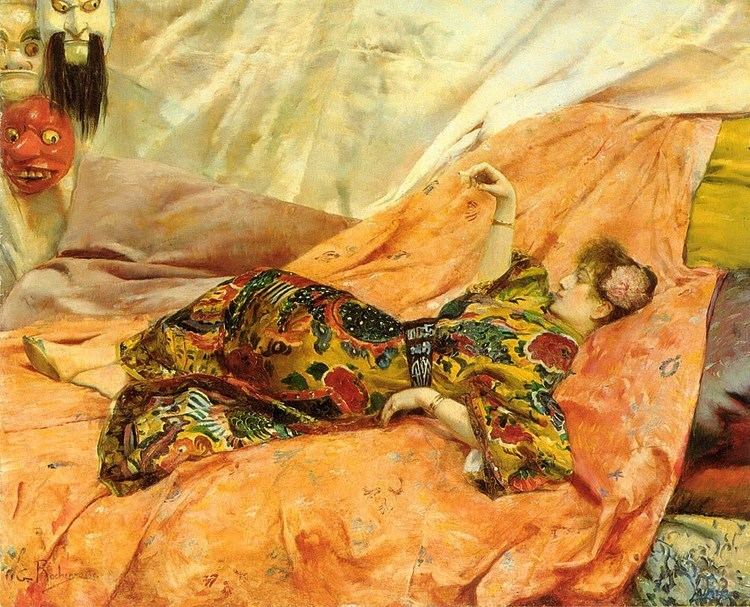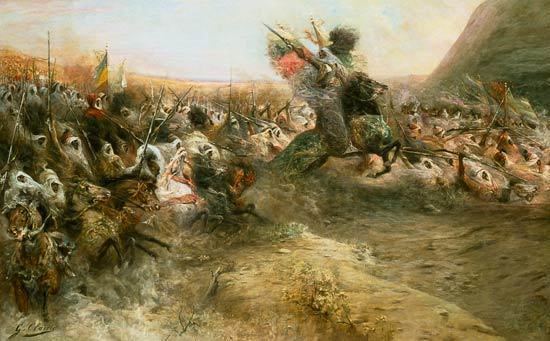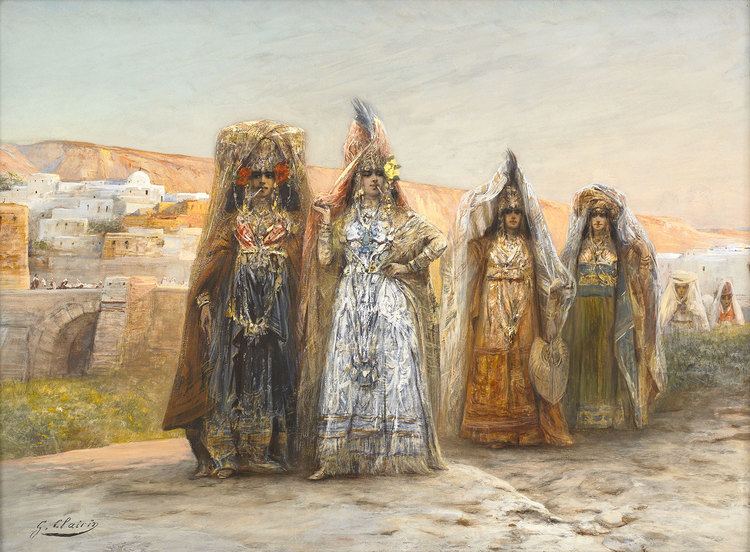Name Georges Clairin | ||
 | ||
Georges Jules Victor Clairin (11 September 1843, Paris – Pouldu, Clohars-Carnoët 2 September 1919) was a French Orientalist painter and illustrator. He was influenced by Eastern imagery Moorish architecture, and visited North Africa many times, in particular Morocco and Egypt. In Paris he led the life of a socialite, and befriended the glamorous actress Sarah Bernhardt, his friend for 50 years, and is today best known for his 'in costume' and informal intimate portraits of her.
Contents

Life

Clairin was apprenticed in the workshops of Isidore Pils and François-Édouard Picot. In 1861 he entered the École des beaux-arts de Paris, and in 1866 first displayed his work. He travelled to Spain with Henri Regnault and to Italy with François Flameng and Jean-Léon Gérôme. He met the Catalan painter Marià Fortuny in Morocco and they visited Tétouan together. In 1895, he travelled to Egypt with the composer Camille Saint-Saëns.

He is best known for his portraits of Sarah Bernhardt, with whom he had a long friendship and whom he depicted in costume for a number of her roles, includingh as the queen in Ruy Blas (1879), Mélisande in La Princesse Lointaine (1895 and 1899), Cleopatra (1900), Theodora (1902) and Saint Teresa of Ávila; he also showed her in less formal poses. Clairin painted many ceilings, among them the foyers of the Opéra Garnier (1874) and the Le Trident, the theatre of Cherbourg.

He was the uncle of the painter Pierre-Eugène Clairin.
Portrait of Sarah Bernhardt, 1876

Clairin's 1876 portrait of Sarah Bernhardt drew praise. Théodore Véron said of it:
The portrait of Mademoiselle Sarah Bernhardt is assuredly one of the most prominent of the Salon, as much for the originality of its composition as for the splendour of its colour.
Monsieur Clarin shows us her wrapped in a long robe of white satin with a trailing train, she is resting on a luxurious divan of pink satin and leaning on a cushion of the same material draped in gold; to her right and in the depths of this Oriental apartment is a Venetian mirror surrounded by purple velvet curtains; to her left a tropical plant lowers its green leaves over the meditating actress and sculptress; at here feet a yellow hound of a large breed rests on its long legs and stretches out its proud and aristocratic head.
Emile Zola found that: "Mademoiselle Sarah Bernhardt isn't pretty but she has fine intelligent features and Clairin has been able to give her a smooth little face and vulgar sensuality like Cabanel would paint."
